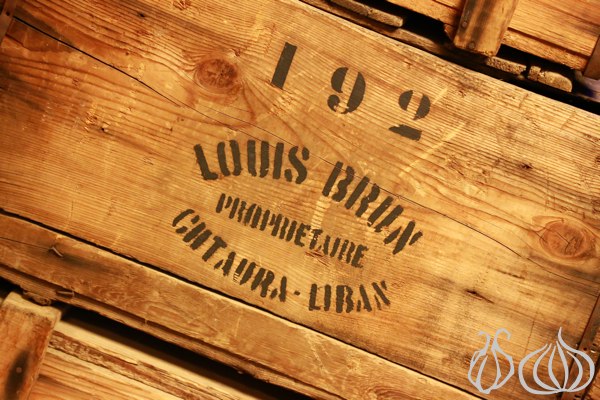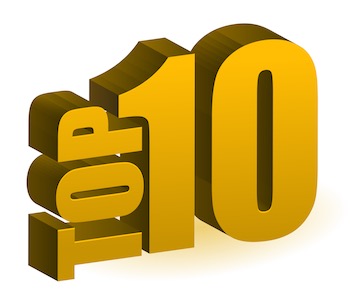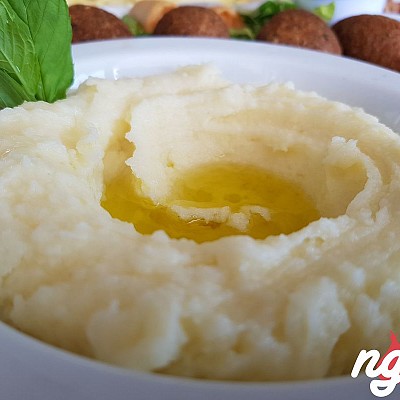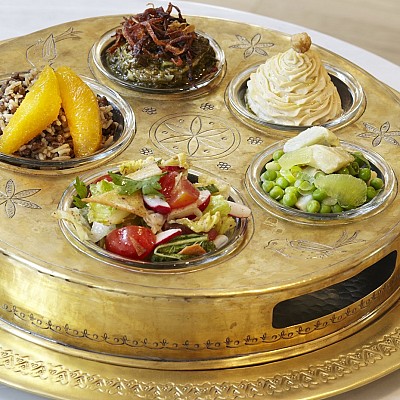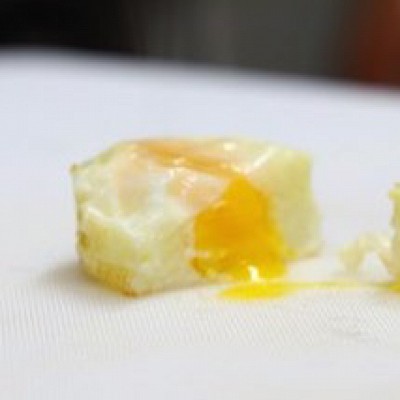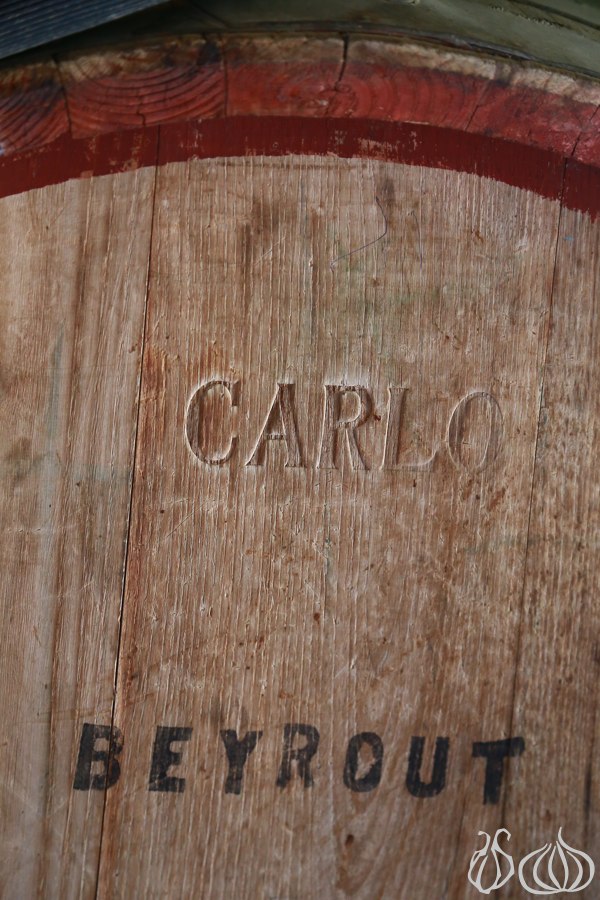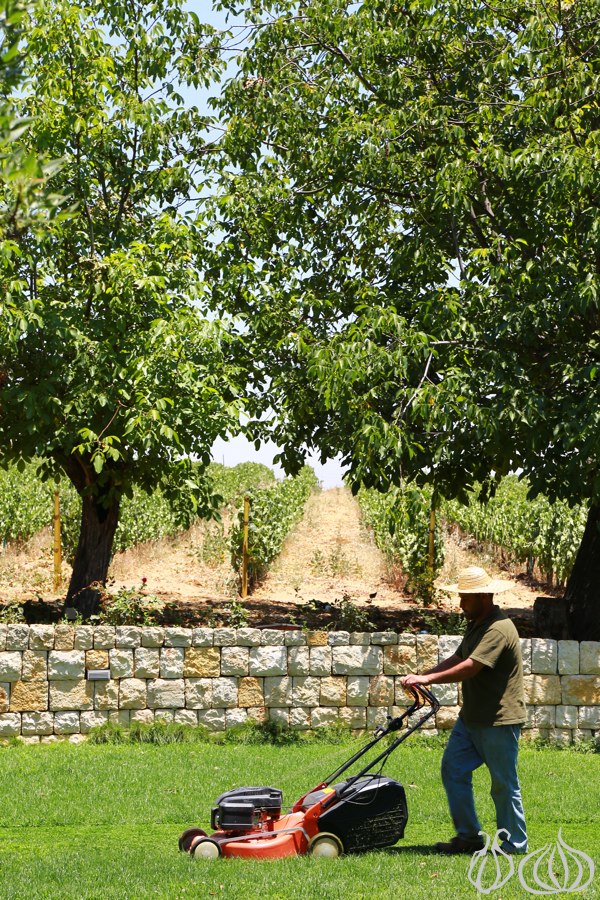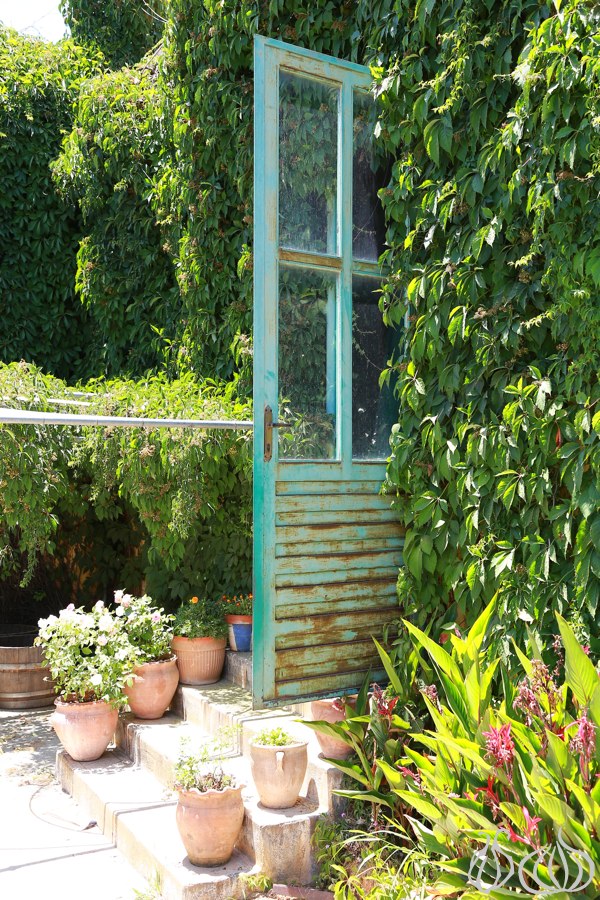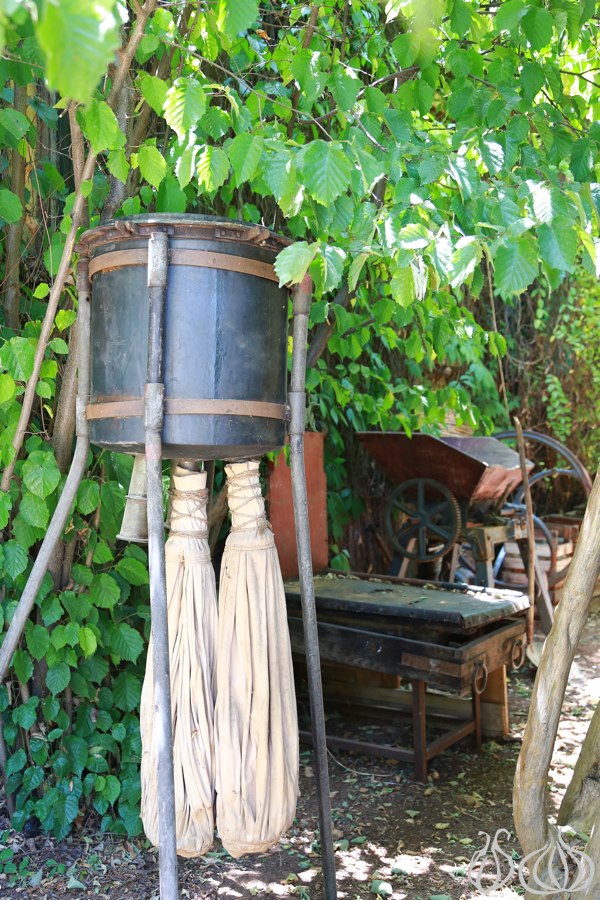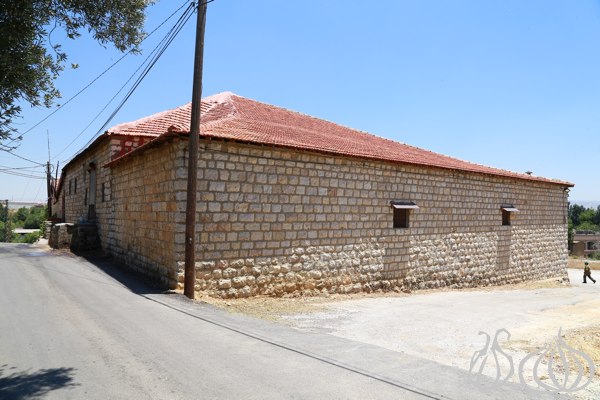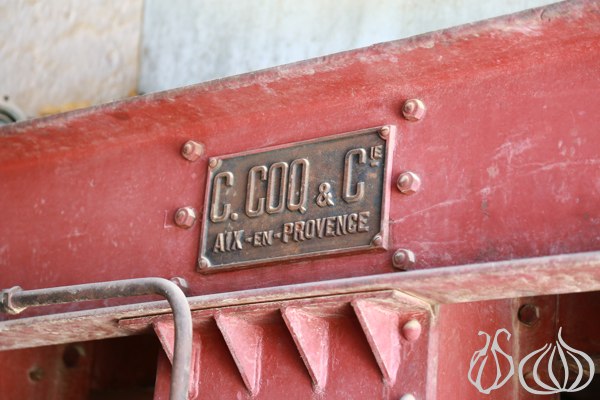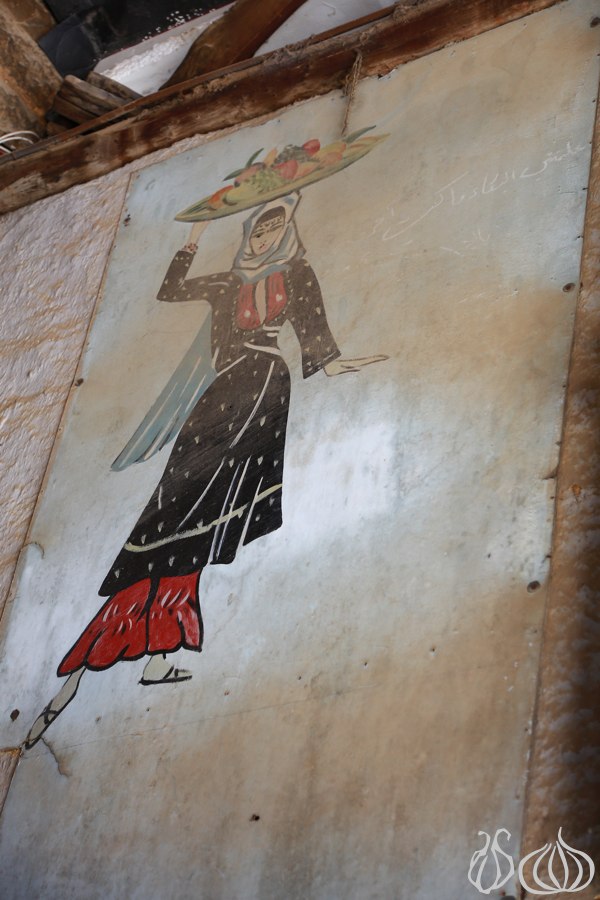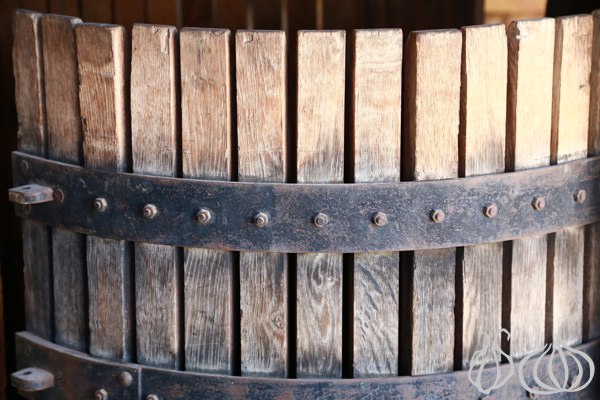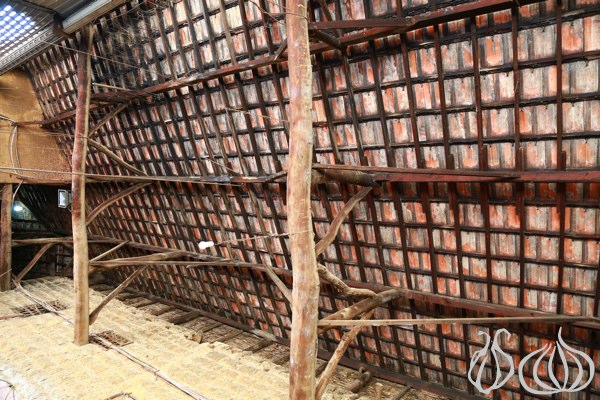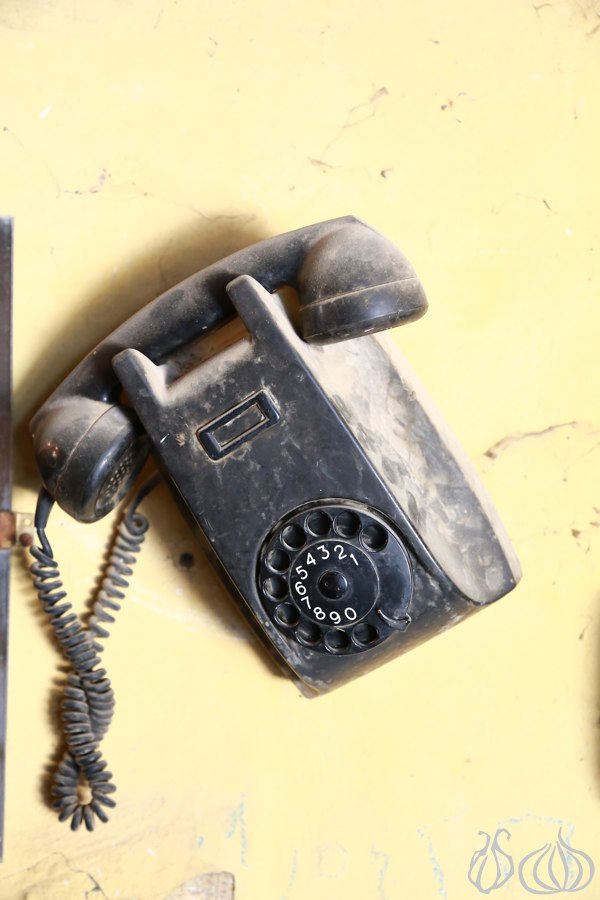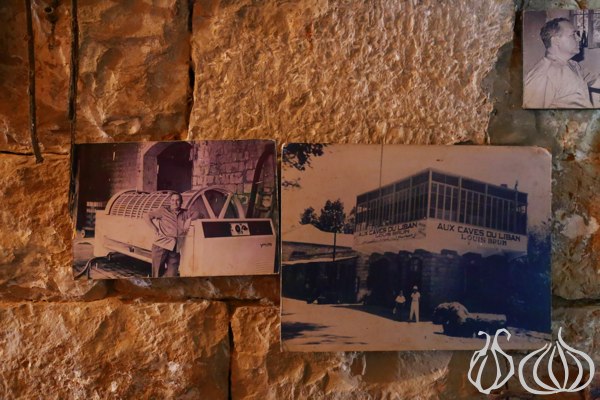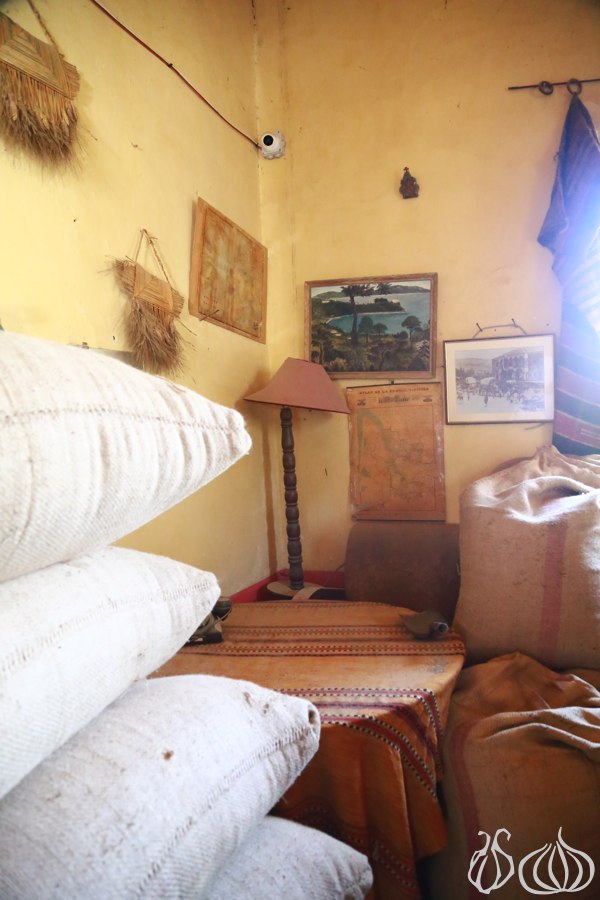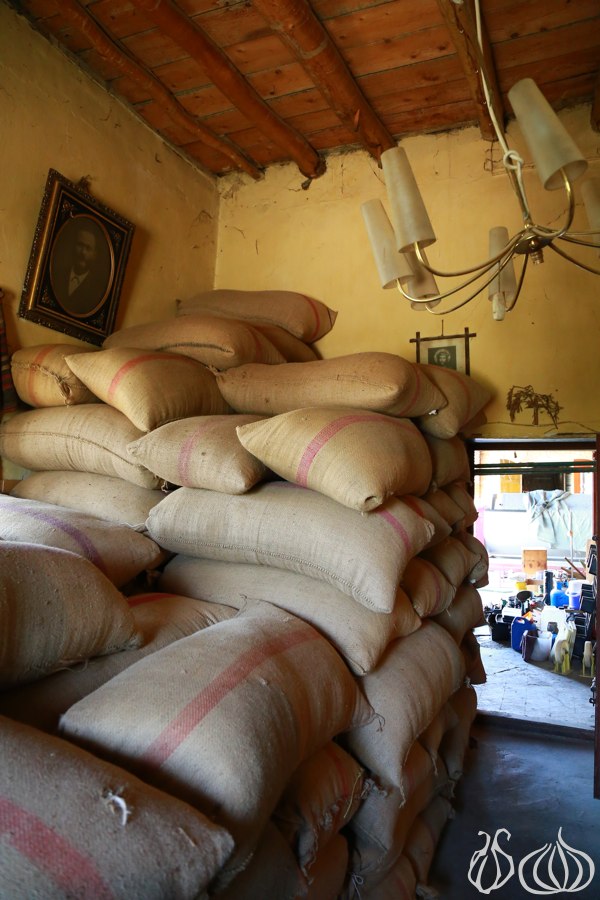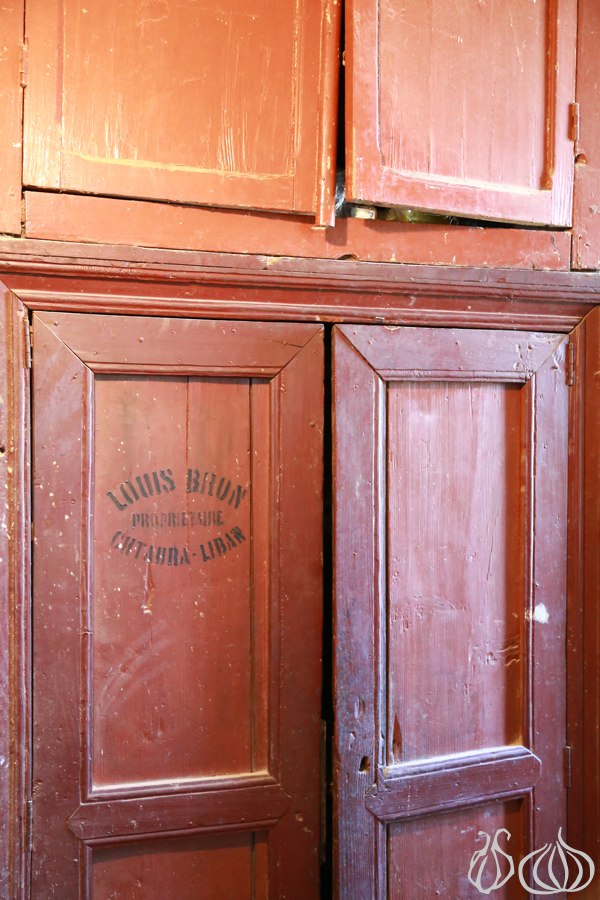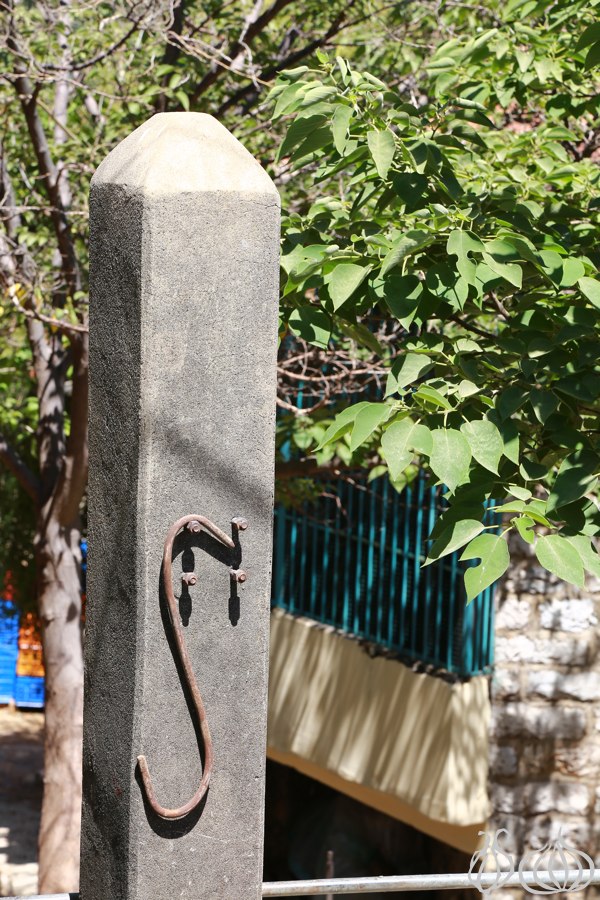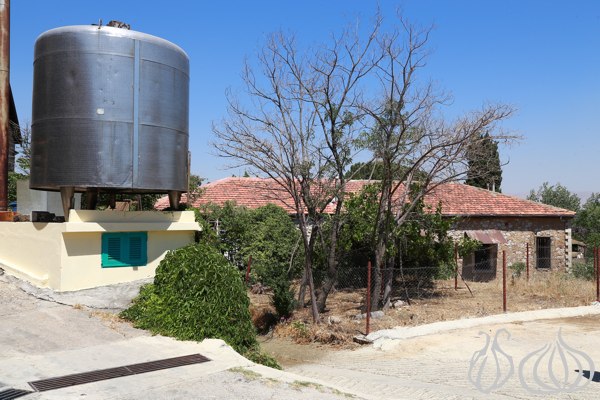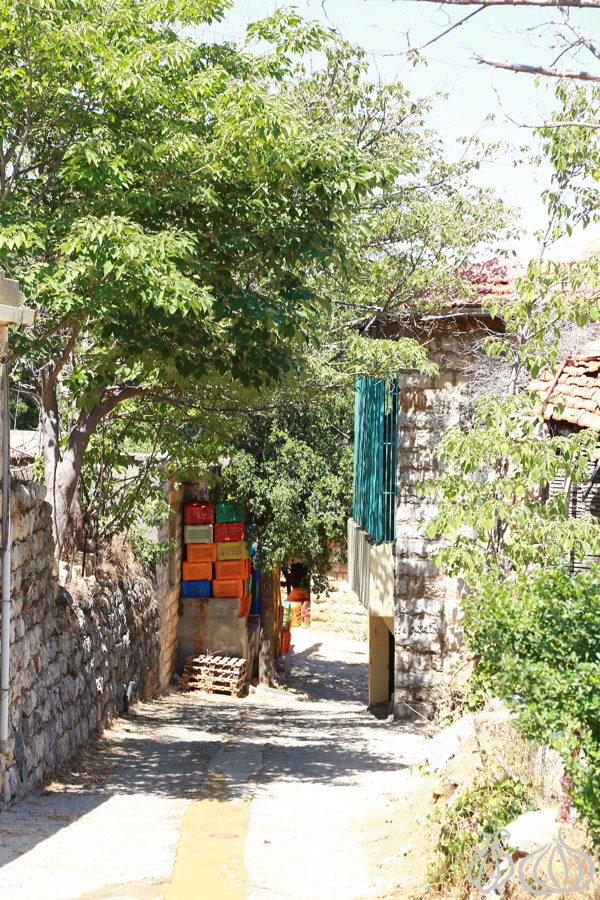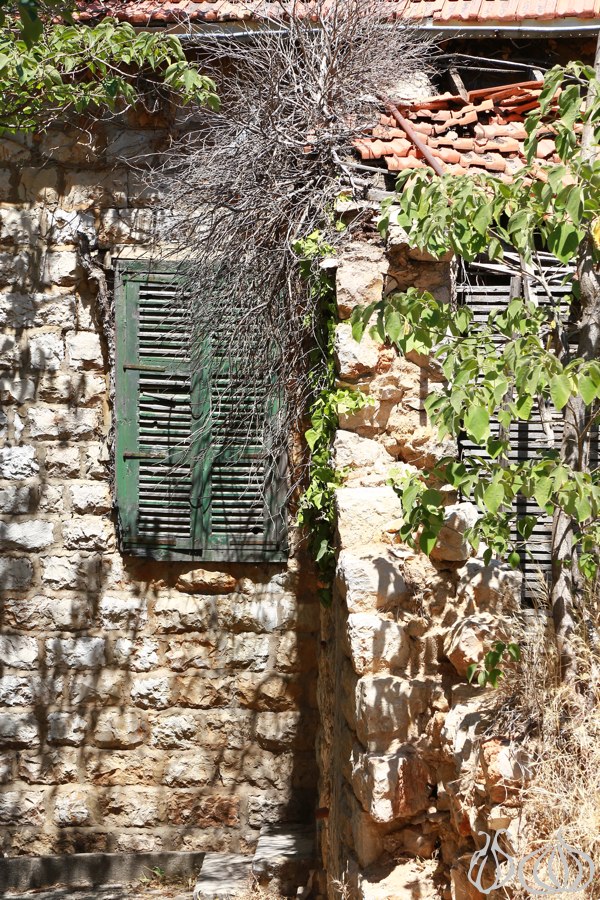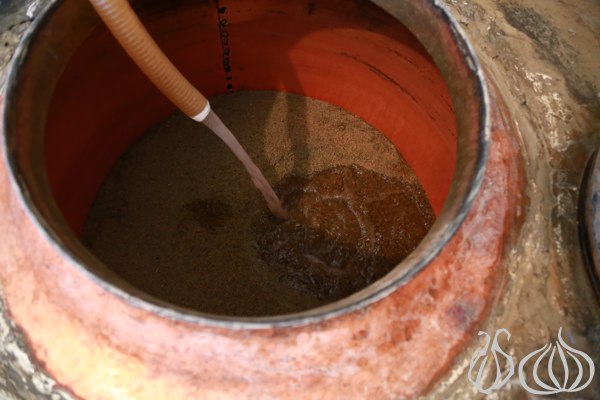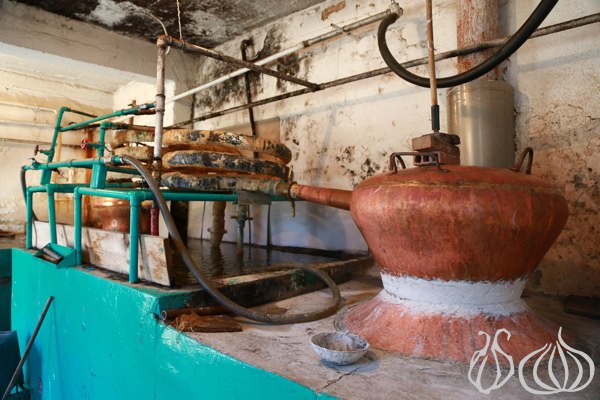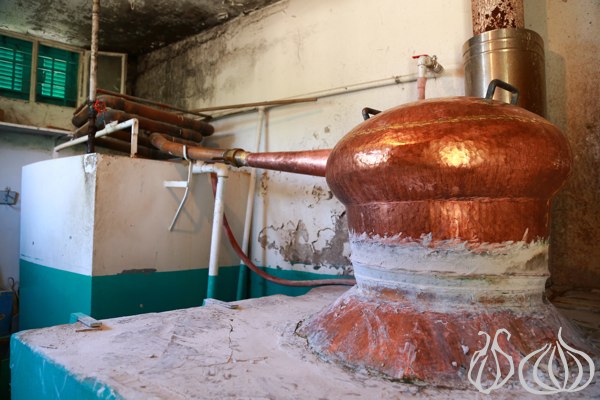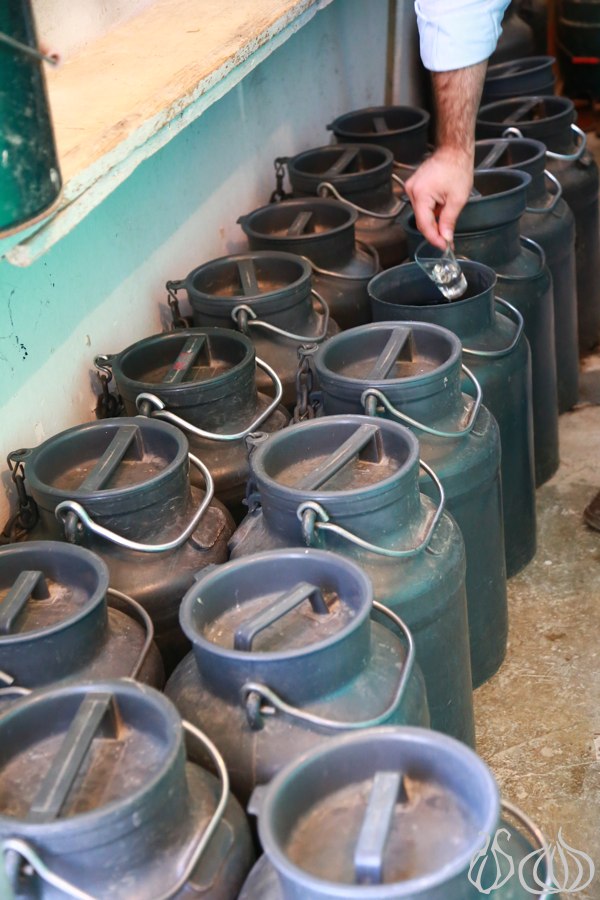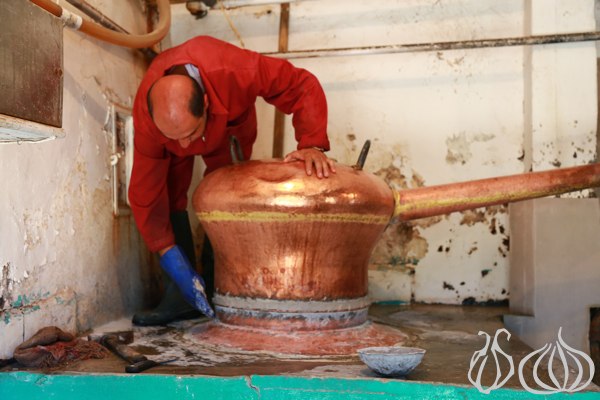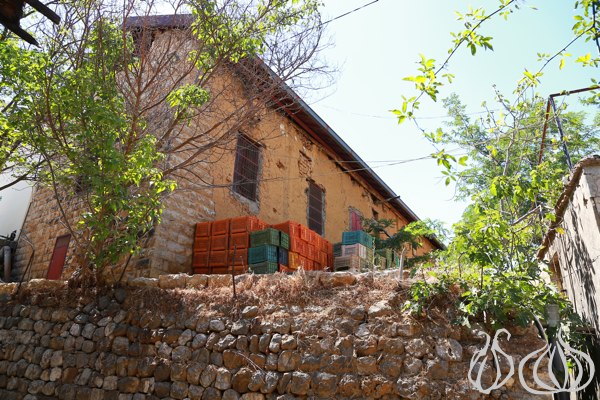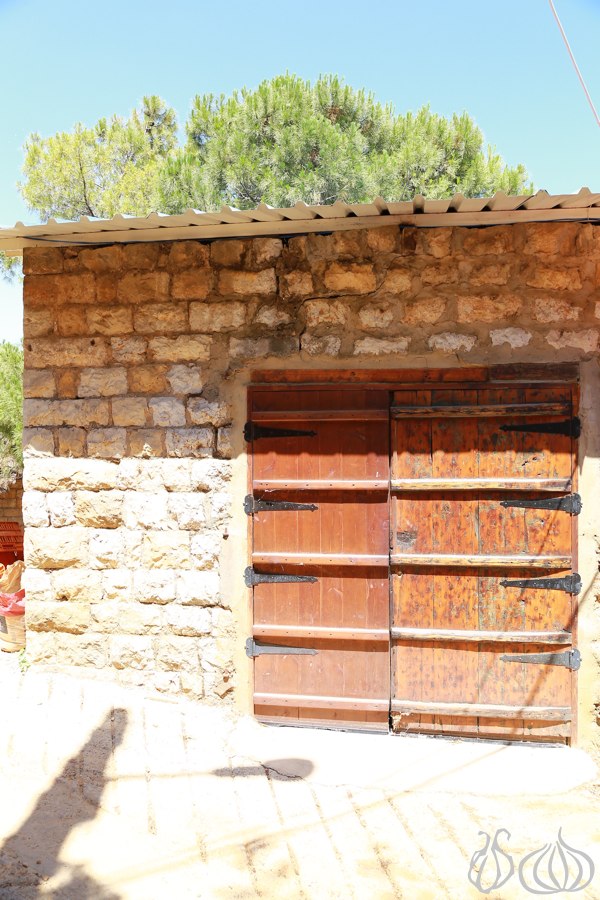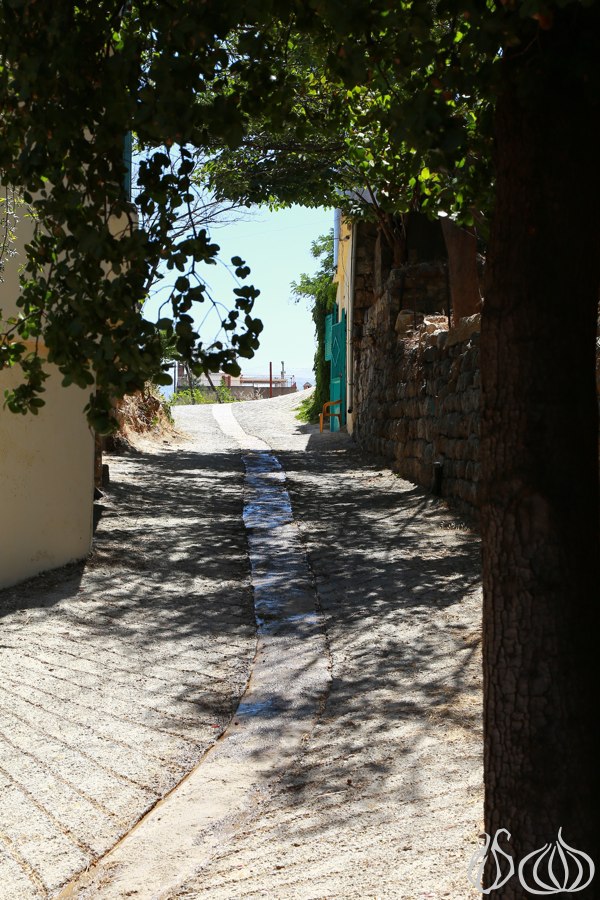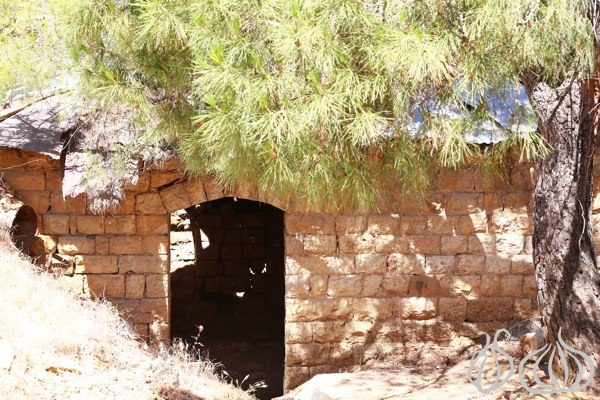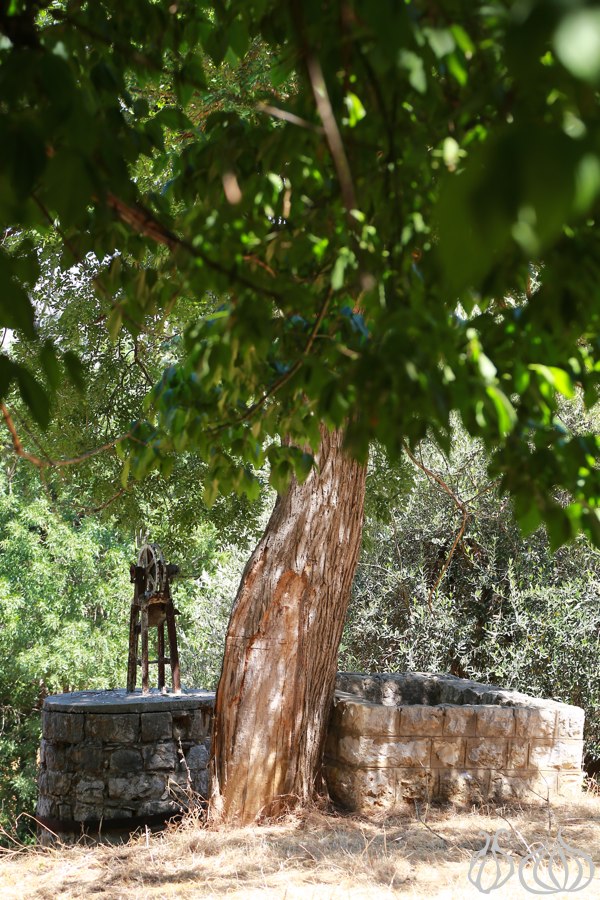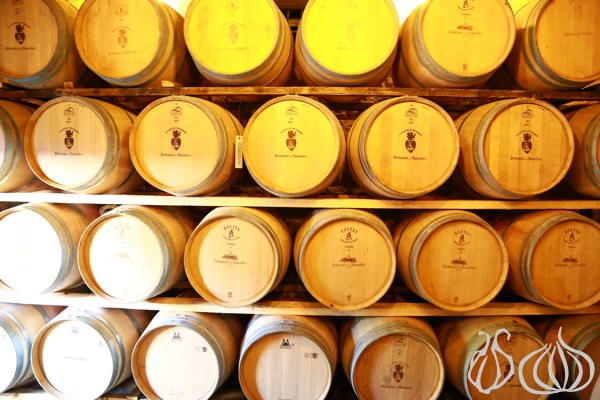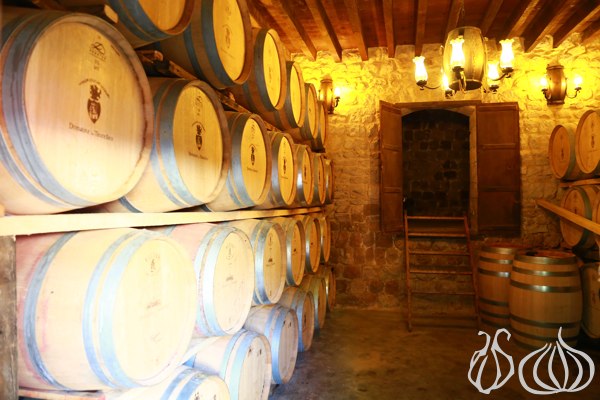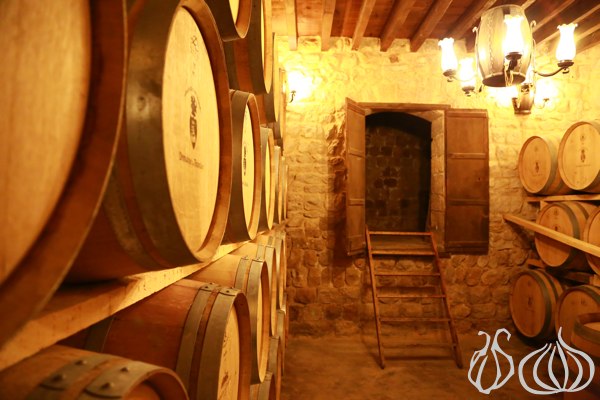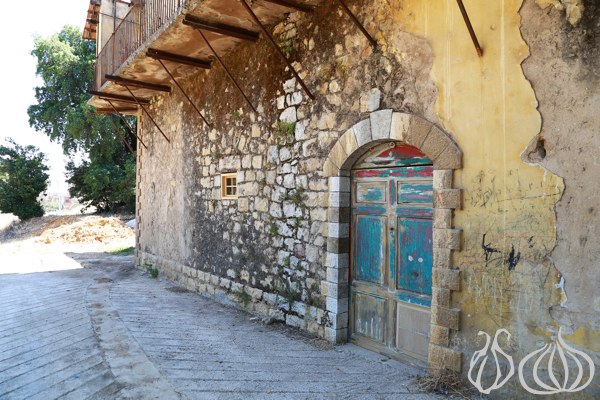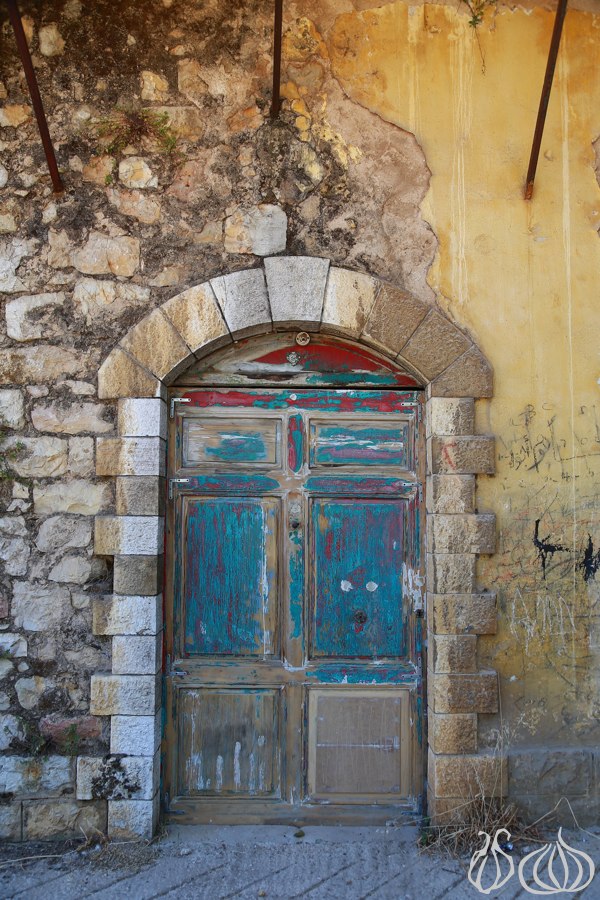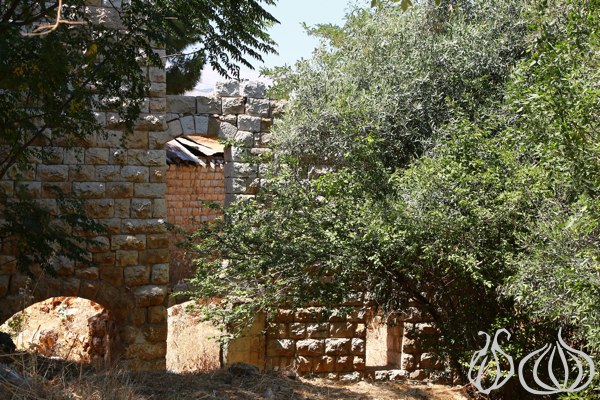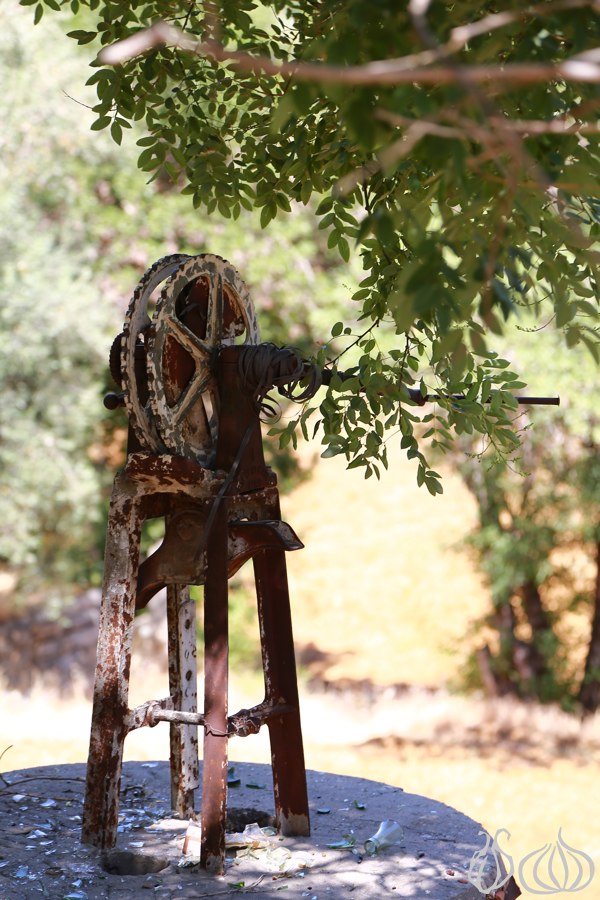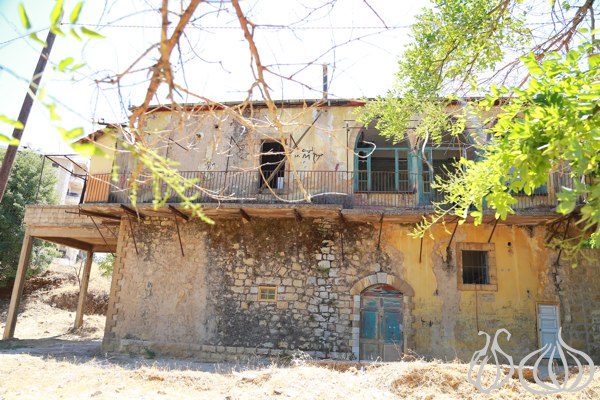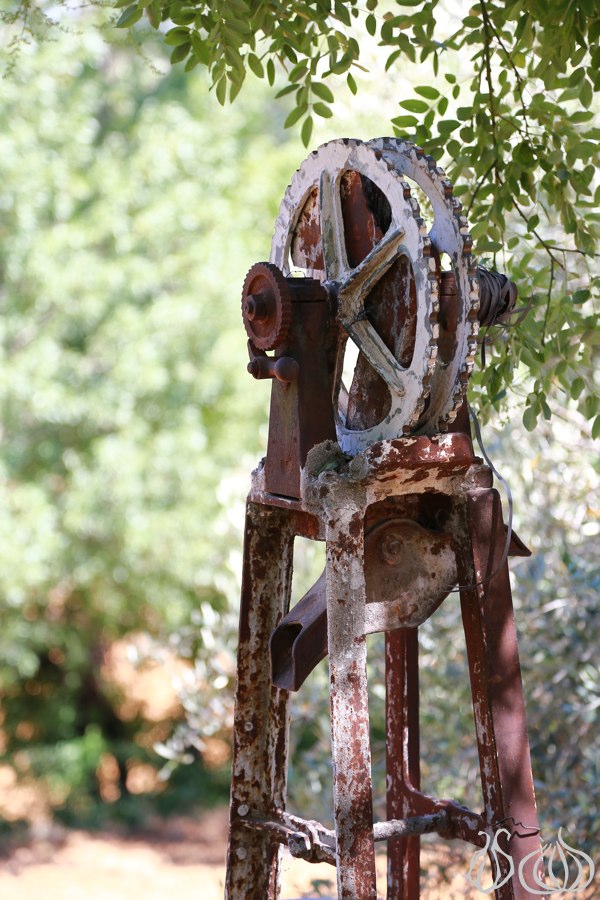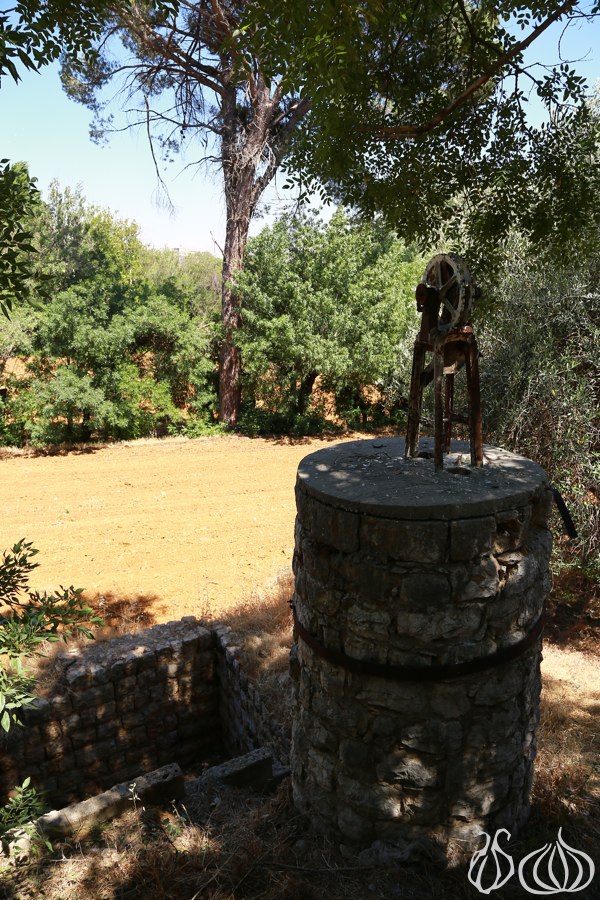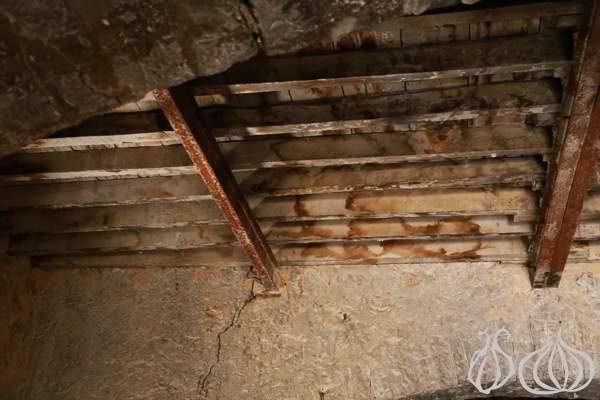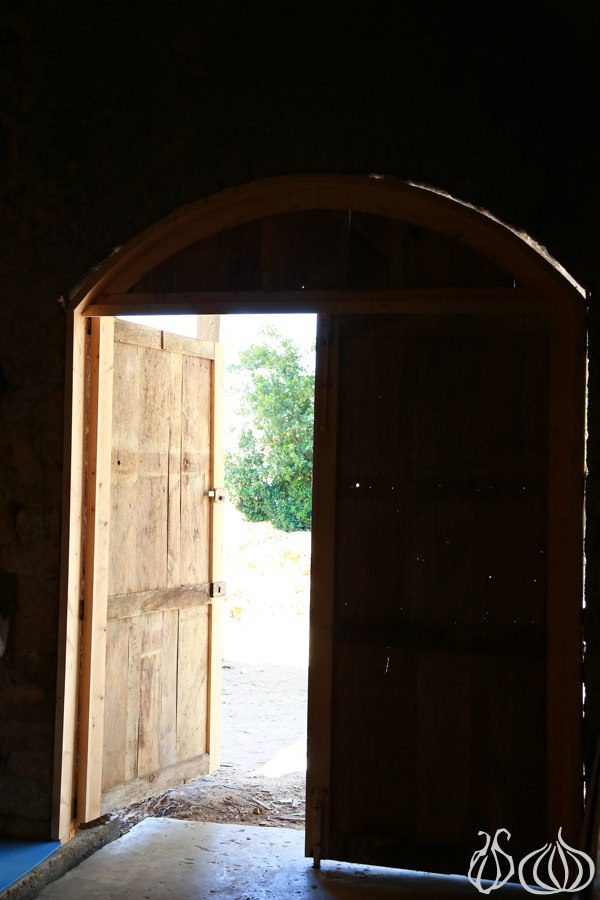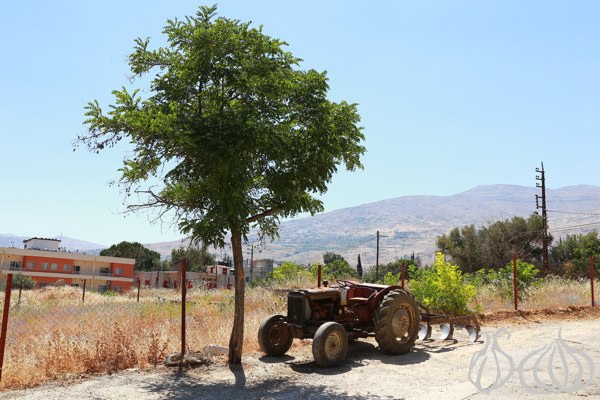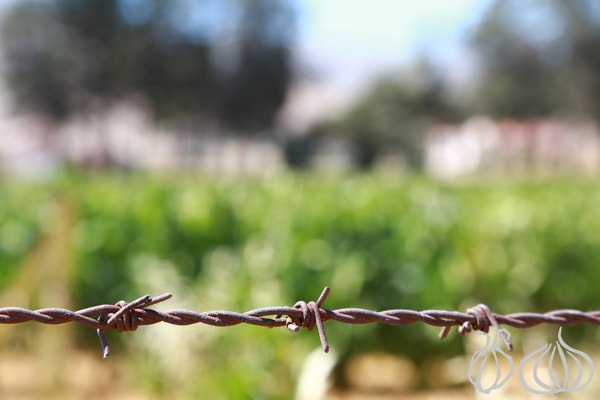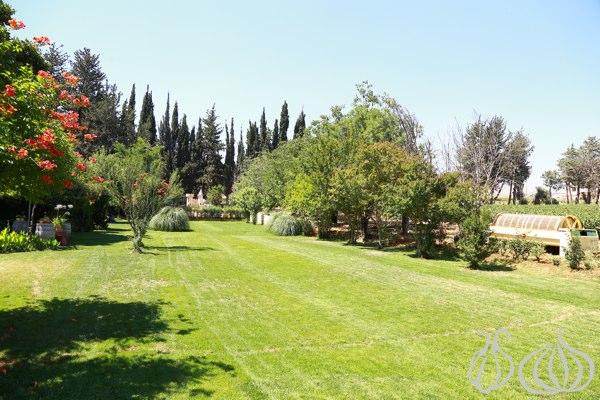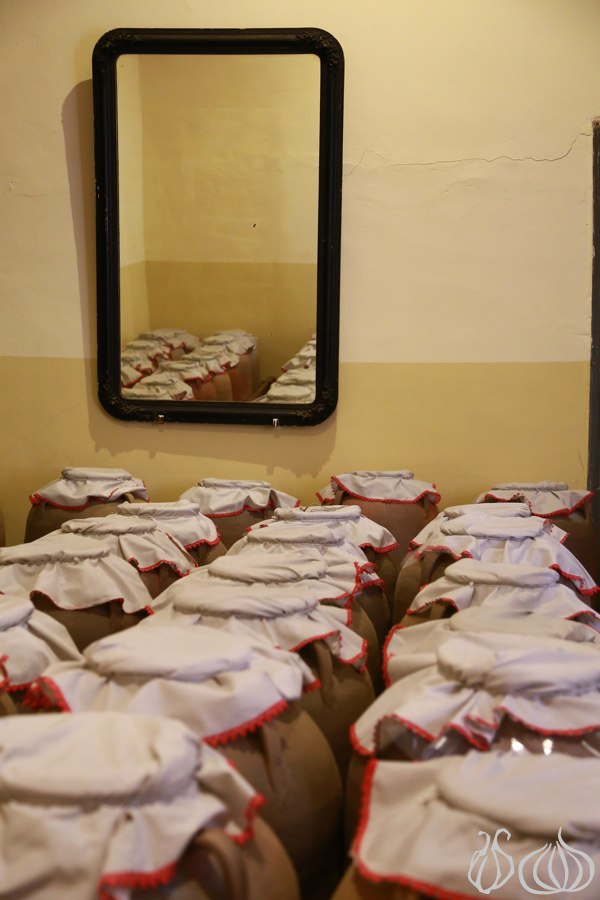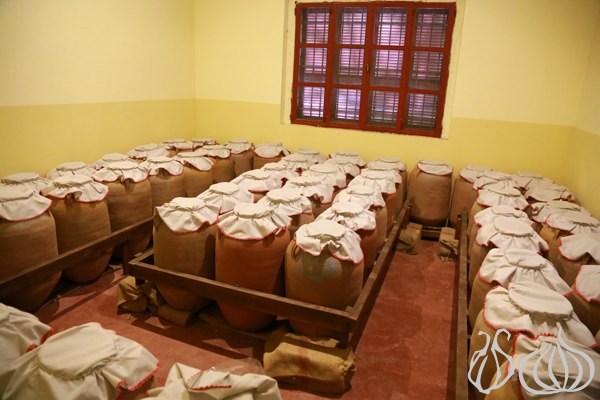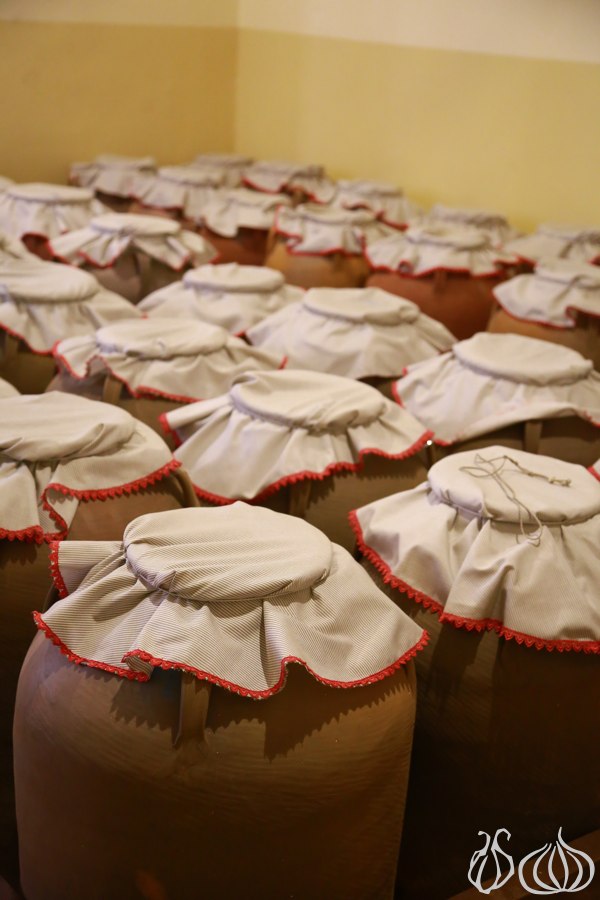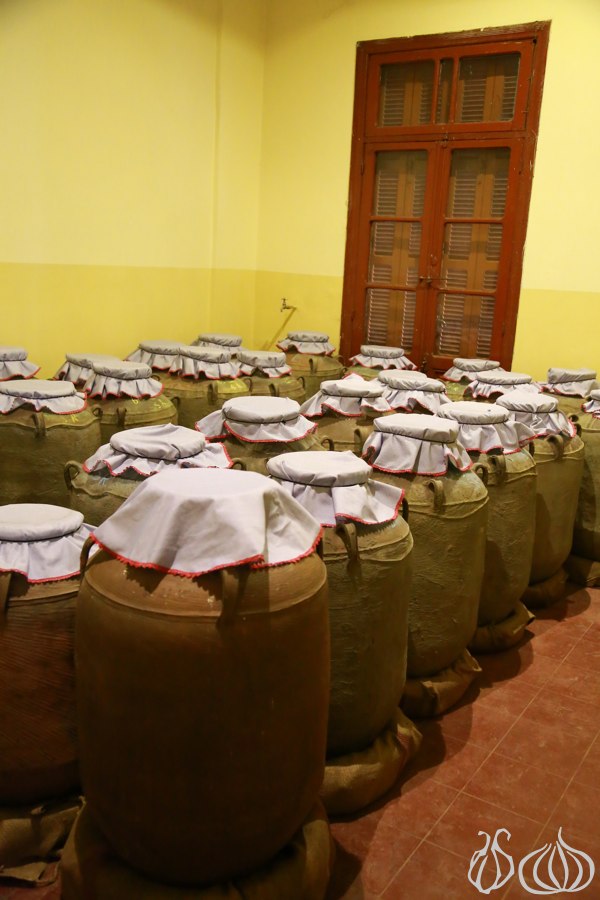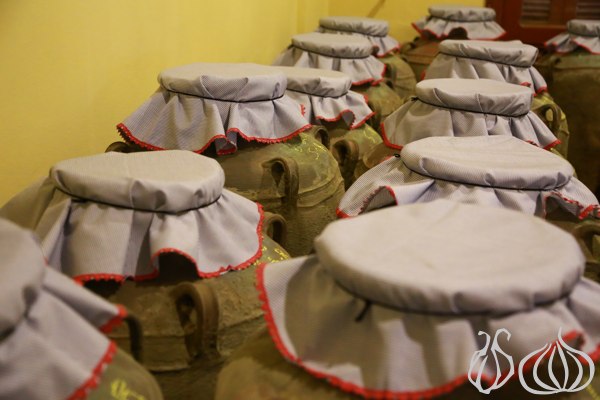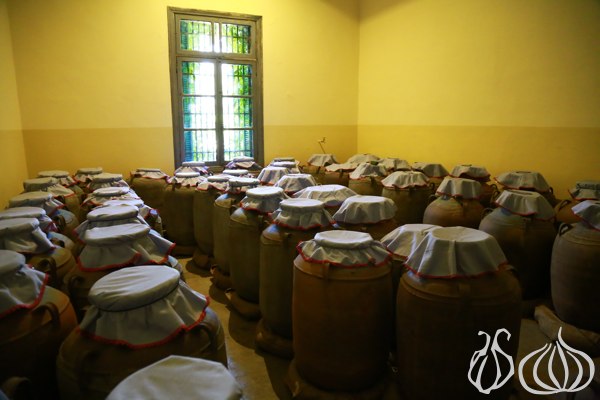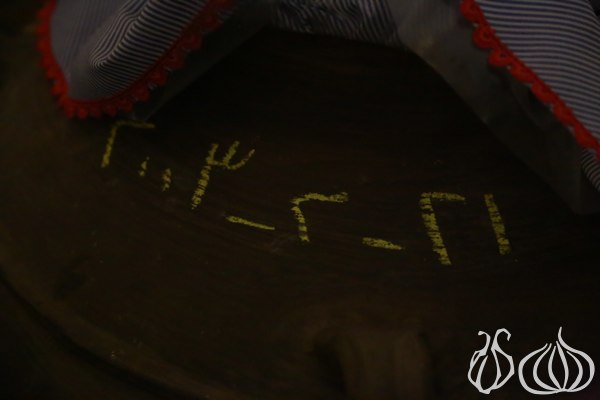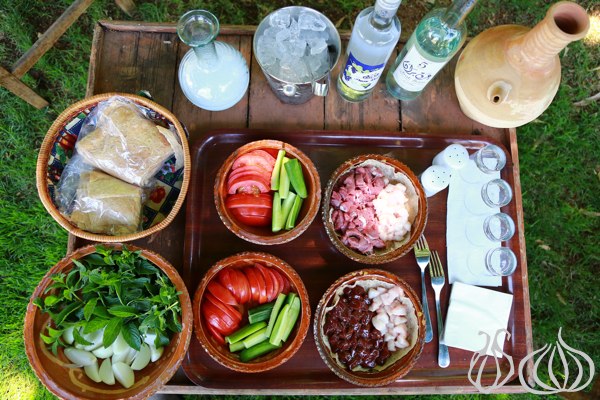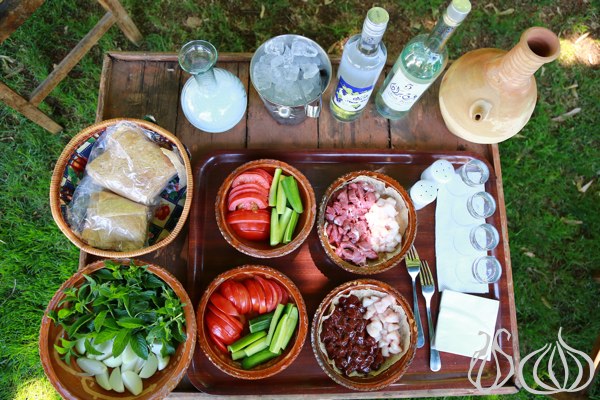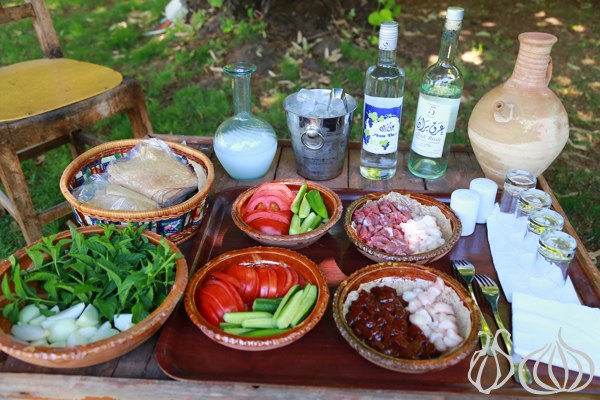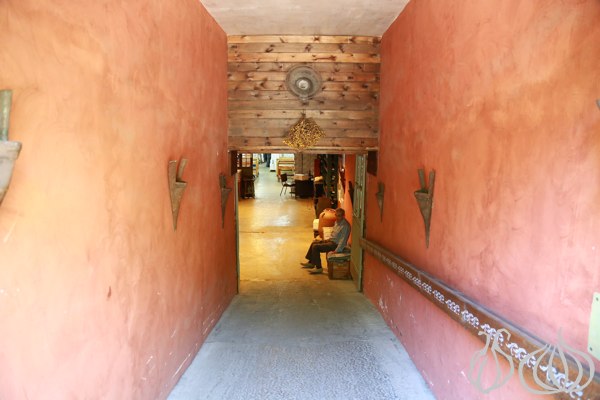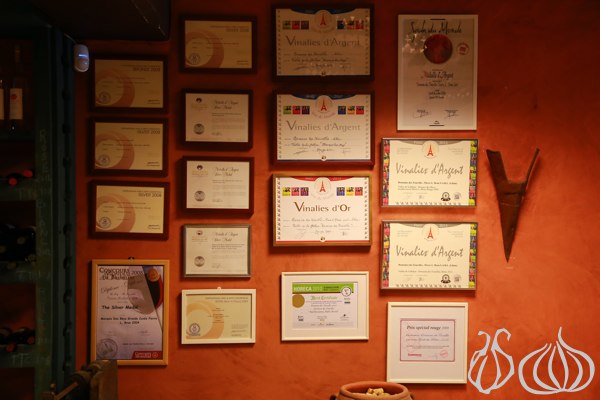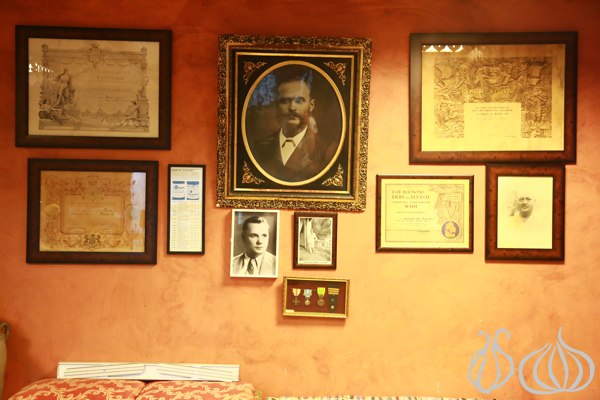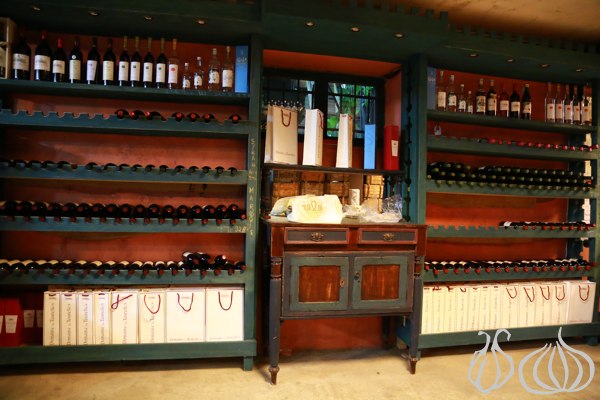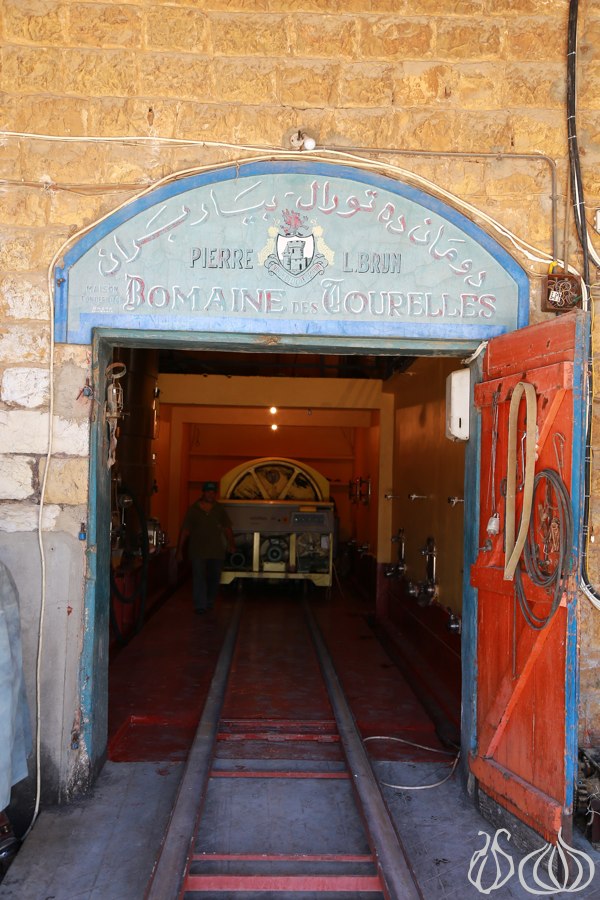
One generation after another ended up with the last descendent, Pierre Brun, who died in 1999 at the age of 82. Afterwards, the winery was bought by the Issa and Issa el Khoury families, launching the new series of wines and continuing the legacy of the finest arak in town, Arak Brun. Today I was meeting Fawzi Issa, the youngest wine maker in Lebanon, who spends all his time up in the Bekaa just a few meters away from the wine caves. Located underground with the thousands of bottles left to calmly age, Fawzi's office is amazing... An old setting, a chimney, wood, dimmed lighting and a fresh breath of air flowing around the old furniture. Filling his office is Fawzi’s collection of wine openers from all around the world, some of which are unique and expensive.
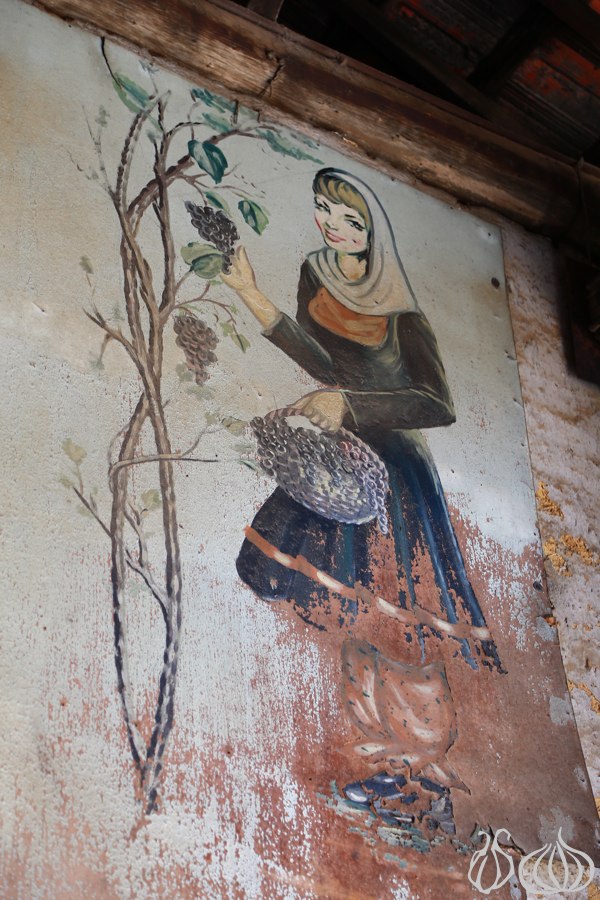
Built in 1868 with stone walls and wood ceilings following traditional Lebanese architecture, the winery saw several expansions over the years. In the 20th century, red bricks were added to the roof and the edifice took its final form that remains till today. The winery was built following an intelligent ancestral design that takes advantage of the best outdoor factors and maintains the ideal ambient temperature all year long.
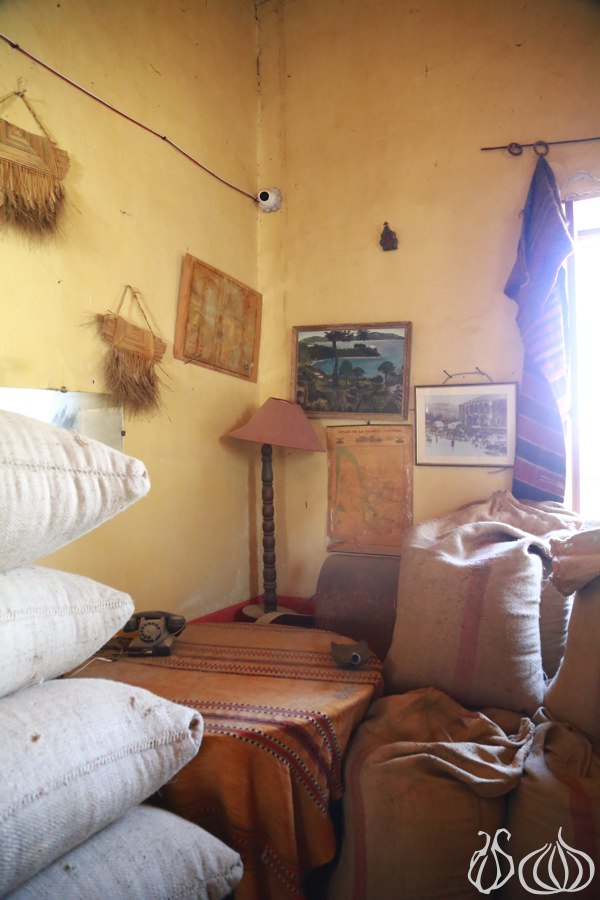
- The Bekaa valley will put Lebanese wine on the international map
- The nights are fresh with high humidity
- The Bekaa offers more than 320 days of sunlight a year
- With its 1100m elevation, the weather is fresh, cold and unique
- The most important criteria: there is an average of 22 degrees difference between the day and night temperature
- You’re guaranteed a good quantity of rai
- In 2008, 10,000 bottles were produced
- In 2009: the first millesime was launched, with 50,000 normal bottles produced and 20,000 premium ones
- In 2014: 250,000 are expected to be sold
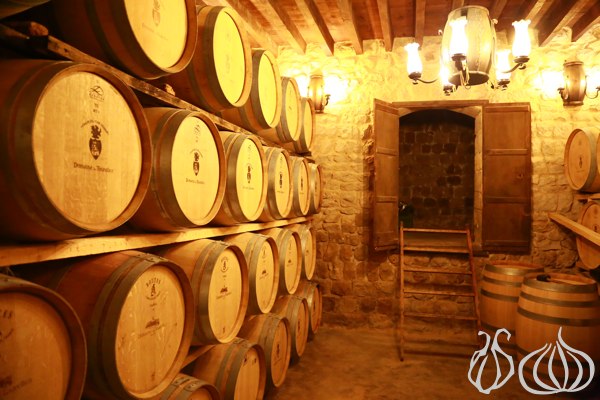
- Arak has to be treated very carefully
- 300,000 bottles of arak are produced every year
- Arak is produced from grapes and aniseed seeds
- A normal bottle is aged for one year in old clay jars
- The special reserve is left for five years
- Every bottle of Brun needs 8kg of grapes. Only fresh grapes are used giving the Arak a unique taste and special aromas
- The following grapes are used: White; Obeidy and Merwah. Red: Cinsault
- Arak Brun doesn't contain methanol
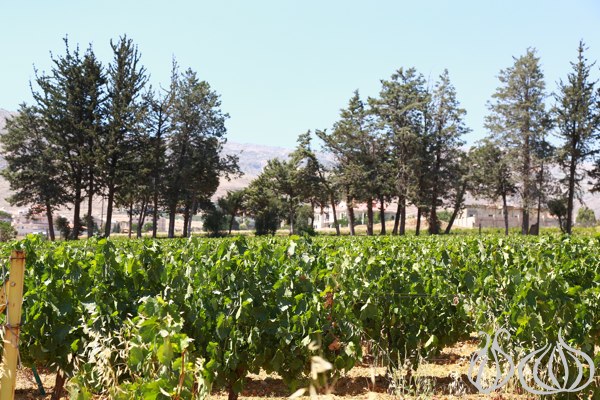
- First distillation: This first stage gives the "brouillis". Fermented wines are first boiled for long hours to create pure alcohol (ethanol). The evaporated alcohol passes through a serpentine mechanism that cools it down, condensing the liquid. 100% of Brun's alcohol is derived from grapes from the winery.
- Second distillation: This second stage gives the "good stroke". The same cycle is repeated again, making sure to remove the natural chemical heads and tails and to eliminate all the unneeded harmful methanol
- Third distillation: Aniseed is added and boiled for four long hours. Here a product called "Nzouli" has a fresh smoky earth taste which will be diluted from 70% to 55% with certified water
- The arak is then stored in clay pots from Beit Chabab for a minimum of 1 year and up to 13 years sometimes
- Finally, the bottling process is reached while the arak is the perfect harmony of its constituents, a moment when it gives off the delightfully combined scents of wine and aniseed.
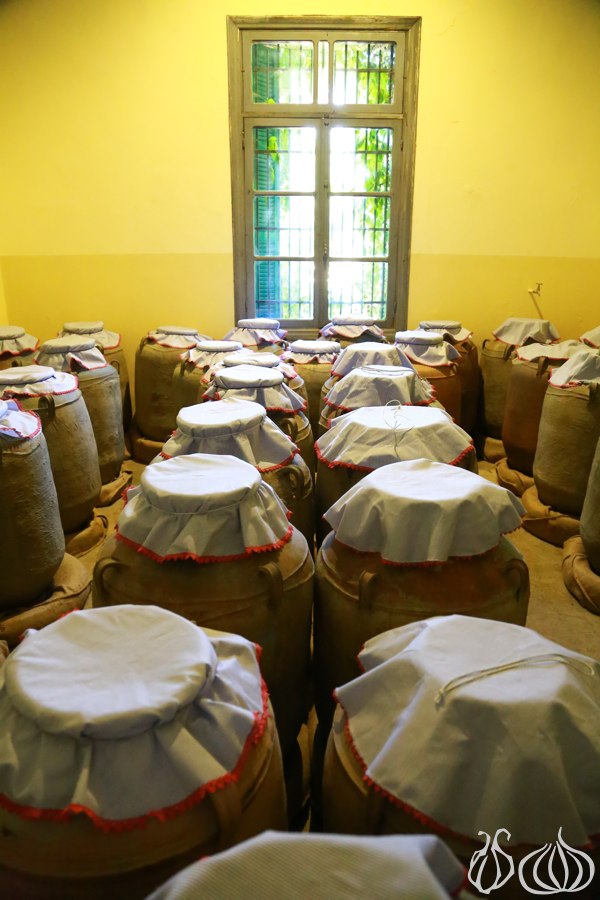
- Domaine des Tourelles 2013 (Viognier, Chardonnay, Muscat d'Alexandrie): Full bodies, fruity nose, goldfish color, interesting texture. A bit of an acidic aftertaste but great, even superb for an entry level. Flavorsome and full of flourishes. This white wine has brilliant limpidity and a magnificent golden color with green reflections. The nose reveals a bouquet of pineapple, litchi and jasmine aromas. This wine is mouth filling with its dry, intense and balanced body. The ending note is marvelous.
- Domaine des Tourelles, Rosé 2012: (Syrah, Cabernet-Sauvignon, Cinsault, Tempranillo) Slightly fruity, strong and acidic. An upscaled version of the Rosé, which we are used to having at the beaches in Lebanon. This rosé wine de saignée releases scents of wild strawberries and litchi when first tasted. The flavor is marked by an exquisite freshness, a fruity and elegant taste that reminds you of summer. This wine goes well with spicy Lebanese or international dishes.
- Domaine des Tourelles red 2011: (Syrah, Cabernet-Sauvignon) Aged in concrete vats. Red berries, strong and acidic. This red wine is a noble blend of Syrah and Cabernet-Sauvignon. It has a ruby color with a beautiful vividness of sparkling reflections. The nose is marked by delicate scents of morello cherries. The mixture is sweet and subtle. The initial taste is fruity and the tannins are silky. A pleasurable wine that goes well with roast red meat and soft cheese.
- Marquis des Beys red 2010: (Syrah, Cabernet-Sauvignon). Cherry, licorice, mint. Oaky, good texture, leaves a nice aftertaste. Parcels of Syrah and Cabernet-Sauvignon were especially selected to create this outstanding wine: a sheer pleasure. This blend is aged in French and American oak barrels. Its dark purple color is a true illustration of its depth. The very first taste reveals a cedar aroma, a gentle reminder that this premium wine is an illustrious ambassador of Lebanon. The palate exhales spicy aromas associated with the Lebanese “terroir” along with blueberry and licorice notes. Rich and structured, this “vin de garde” has a remarkable ending note. Best served with red meat and heavy cheese.
- Syrah du Liban, grande cuvée, red 2010: Very structured, very intense. Mono Sepage is challenging. The Syrah is a typical grape of the Mediterranean region. Lebanon’s “terroir” gives it remarkable dimension. This wine, spicy in character, creates a real firework in the mouth before ending with a note that is elegant, flowery and balanced. The vine parcels of this wine have been carefully selected from high altitude Lebanese mountains to make it a very pleasurable delight to savor. Best served with highly seasoned dishes.
